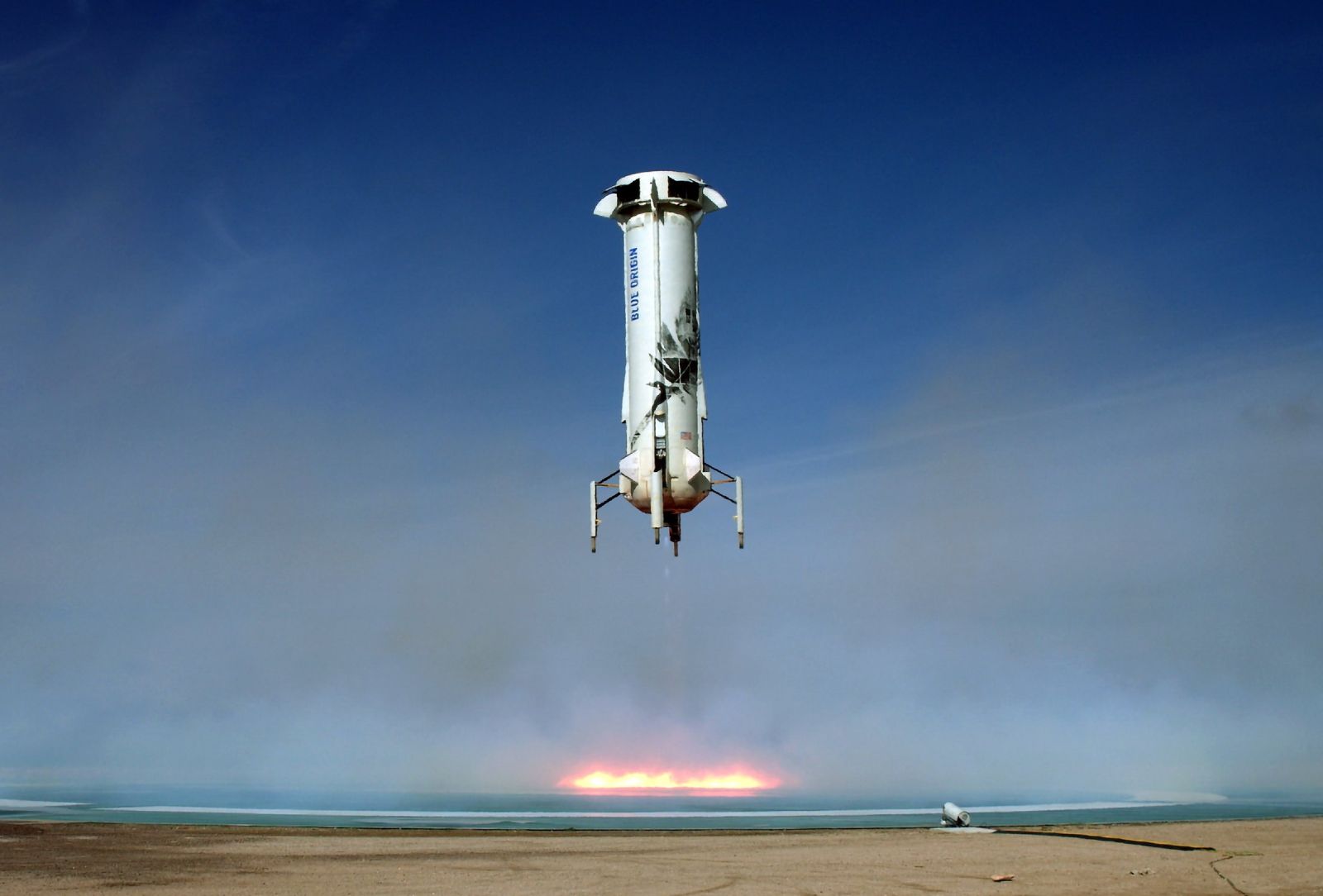 Blue Origin’s “Road to Space”
Blue Origin’s “Road to Space”
The US Government first funded roadways through the Federal Aid Road Act of 1916, and began an effort to construct a national road grid in 1921. After Dwight D. Eisenhower became president in 1953, his administration developed a proposal for an interstate highway system, eventually resulting in the passage of the Federal Aid Highway Act of 1956. Construction of the Interstate Highway System was proclaimed complete in 1992. 1
In fact, its official name is the Dwight D. Eisenhower National System of Interstate and Defense Highways. The word “Defense” is critical in this regard. Although little-recognized now, Eisenhower, being a retired five-star, US Army general, was primarily concerned with the inability — in 1952 — to efficiently transport large quantities of troops and supplies across the poorly-developed, US highway system. His objective was to be able to deliver a “heavy-lift” capability for defense materials to any part of the continental US during a national crisis. Of course, what developed is today’s Interstate Highway System.
Jeff Bezos’ and Blue Origin
“We are not in a race, and there will be many players in this human endeavor to go to space to benefit Earth. Blue's part in this journey is building a road to space with our reusable launch vehicles, so our children can build the future. We will go about this step by step because it is an illusion that skipping steps gets us there faster. Slow is smooth, and smooth is fast.”
Blue Origin.com
Jeff Bezos may be the founder of Amazon.com, but he now has a much more significant mission than selling kitchen toasters, office furniture and baby wipes over the Internet. Bezos is literally shooting for the Moon and building future, long-term, human settlements in space. In a manner similar to building the interstate highways, Bezos clearly intends to go slowly and smoothly, much as President Eisenhower’s highway system that took 40 years to construct and complete.
Bezos’ objective is: “Millions of People Living and Working in Space. Blue Origin’s vision is a future where millions of people are living and working in space. In order to preserve Earth, our home, for our grandchildren’s grandchildren, we must go to space to tap its unlimited resources and energy. If we can lower the cost of access to space with reusable launch vehicles, we can all enable this dynamic future for humanity.” 2
Blue Origin is in the process of developing a fleet of partially-reusable, launch vehicles and rocket engines to loft scientific, commercial and military payloads into space. The importance of reusability is the cost of access to space. Right now, Blue Origin is in the process of developing a fleet of launch vehicles known as New Shepard and New Glenn as well as a Moon lander vehicle called Blue Moon. The first two vehicles are named after two members of the original Mercury 7 astronauts, the late Alan Shepard and John Glenn. The term “Blue Moon” has commonly been used to mean “never” or “rarely,” but that doesn’t seem to be appropriate in this context [!]. New Shepard is currently taking payloads to space and will soon carry astronauts. New Glenn's heavy-lift capabilities will bring crew, passengers and payloads to low Earth orbit. These next-generation launch vehicles are powered by their family of high-performance, reusable rocket engines. In this sense, Blue Origin is focused on developing an infrastructure for the creation of human spaceflight capabilities. In this way, they are building that “road to space” — a road so that our “children and grandchildren can build the future.”
New Shepard Launch Vehicle
Named after Mercury 7 astronaut Alan Shepard, the first American to go to space, New Shepard is their reusable, suborbital rocket system designed to take astronauts and research payloads past the Kármán line – the internationally recognized boundary of space (named after Theodore von Kármán).
New Shepard offers flights to space over 100 km. and accommodations for payloads both inside their “Crew Capsule” (see below) or with direct exposure to space. With about three minutes of microgravity, the Crew Capsule is ideal for microgravity physics, gravitational biology, technology demonstrations, and educational programs. Payloads adjacent to the largest windows in space or mounted on the outside of the vehicle can perform world-class Earth, atmospheric, and space science research.
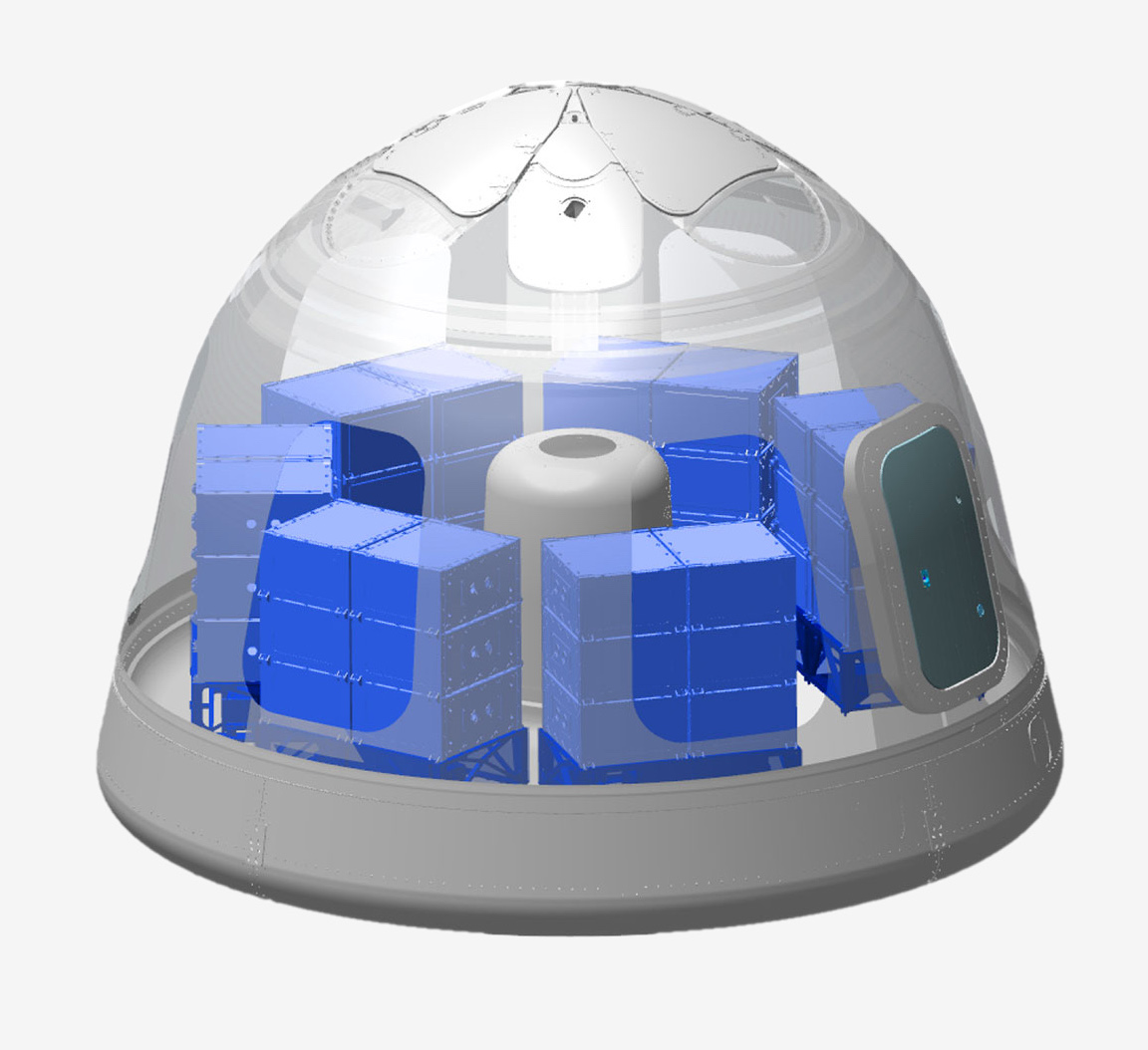 The man-rated “Crew Capsule” is designed to accommodate up to six payload stacks with as many as 36 individual payload lockers. Future flights will replace some of these stacks with passenger seats to support human-tended payload flights, allowing researchers to conduct their own hands-on work in space. Inside the capsule, a variety of experiments from small “NanoLabs” (experiments with nanotechnology) up to 225 lb., with custom solutions available for larger payloads. These payloads are supported by Blue Origin’s proprietary avionics system and software, including control systems, cameras, data storage, electrical power and telemetry. 4
The man-rated “Crew Capsule” is designed to accommodate up to six payload stacks with as many as 36 individual payload lockers. Future flights will replace some of these stacks with passenger seats to support human-tended payload flights, allowing researchers to conduct their own hands-on work in space. Inside the capsule, a variety of experiments from small “NanoLabs” (experiments with nanotechnology) up to 225 lb., with custom solutions available for larger payloads. These payloads are supported by Blue Origin’s proprietary avionics system and software, including control systems, cameras, data storage, electrical power and telemetry. 4
New Glenn Rocket
New Glenn will be a heavy-lift launch vehicle capable of carrying crew, passengers and payloads routinely to Earth orbit and beyond. Featuring a reusable first stage built for 25 missions, New Glenn will build a road to space. New Glenn’s fully reusable first stage will be designed for a minimum of 25 flights, making it competitive for a variety of launch markets. Civil, commercial and military customers can all find solutions in New Glenn’s high-performance configuration.
New Glenn will be a reliable, cost-competitive system with high availability. The seven-meter (23 feet) fairing will have two times the payload volume of any existing launch vehicle, which means more storage for satellites. New Glenn will also be able to launch and land in 95% of weather conditions, making it a reliable option for payload customers.
New Glenn lifts off from Launch Complex 36 (see diagram below) at Cape Canaveral. Following stage separation, the first stage returns to Earth and lands nearly 625 miles downrange on a recovery ship, allowing the booster to land in heavy seas. The second stage engines ignite and the seven-meter fairing separates. The mission is complete when the payload is delivered safely to orbit. The non-recoverable second stage then descends into the ocean.
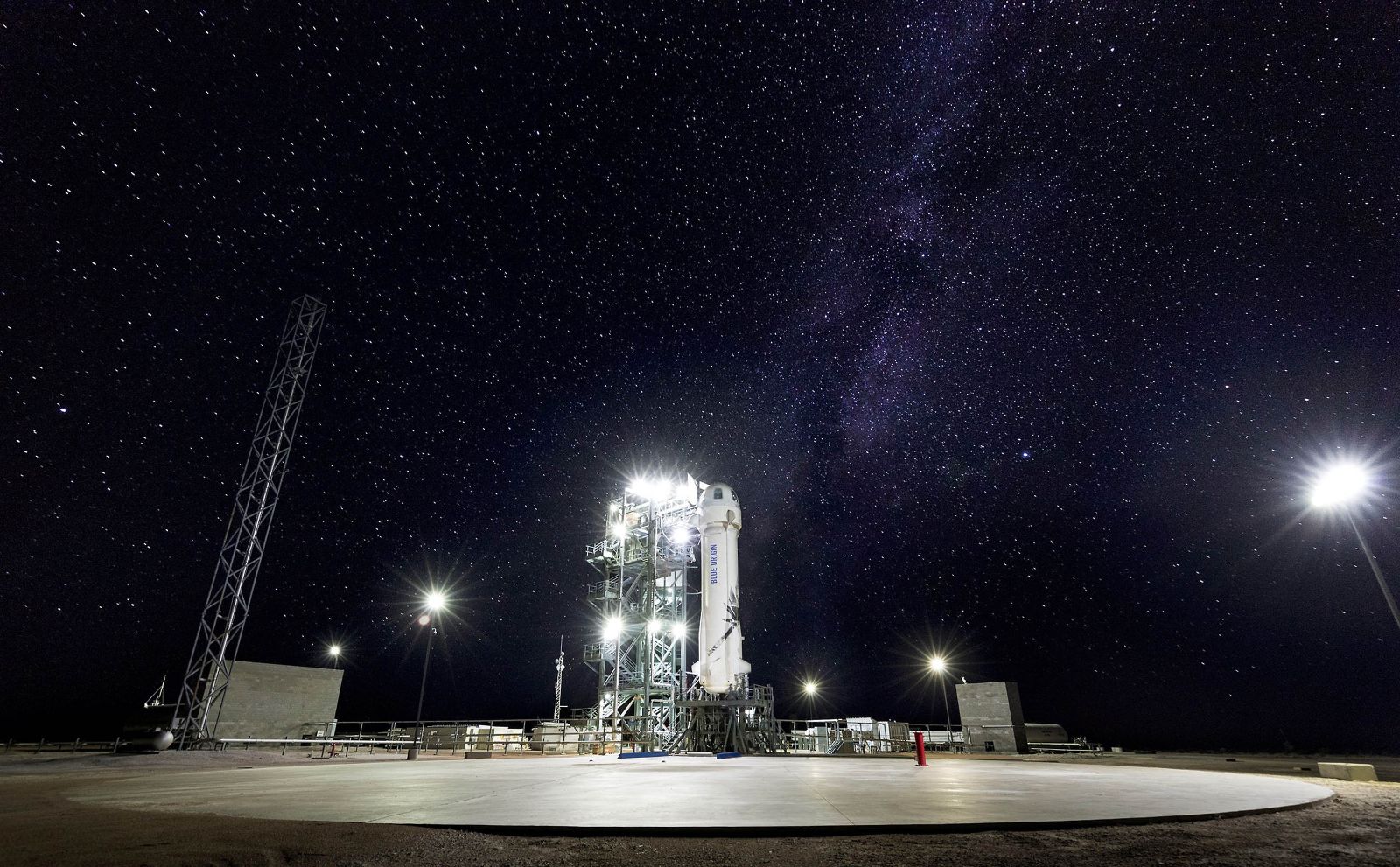 New Glenn’s BE-4, the world’s most powerful liquid oxygen / liquefied natural gas engine, will enable New Glenn to deliver payloads over 13 metric tons to geostationary transfer orbit and 45 metric tons to low Earth orbit beginning in 2021.
New Glenn’s BE-4, the world’s most powerful liquid oxygen / liquefied natural gas engine, will enable New Glenn to deliver payloads over 13 metric tons to geostationary transfer orbit and 45 metric tons to low Earth orbit beginning in 2021.
Blue Moon Lunar Lander
But there is still more to the Blue Origin mission: it’s called Blue Moon, a Moon landing and research spacecraft. Blue Moon will deliver payloads to the lunar surface, host payloads and even deploy payloads during its journey to the Moon. Its technology builds on the experience with New Shepard with respect to LH2/LOX propulsion 9, guidance and vertical landing systems. Blue Moon will be capable of landing multiple metric tons of payload to the lunar surface. 10
The top deck and lower bays will accommodate a wide variety of payloads, including large payloads. On the lower bay, there are mounting points for payloads that are to be lowered to the Moon’s surface.
The Blue Moon lander will provide kilowatts of power to payloads using its fuel cells, allowing for long mission durations and the ability to last throughout the lunar night. The Blue Moon lander can deliver large infrastructure payloads with high accuracy to pre-selected locations. The larger, man-rated variant of Blue Moon (see below) has been designed to land an ascent vehicle that will return the astronauts to Earth. Blue Moon's guidance and descent sensors utilize machine learning technology to accurately land anywhere on the lunar surface, starting with its first mission.
Notes
- Courtesy of Wikipedia.
- Courtesy of Blue Origin.com.
- Ibid.
- Ibid.
- Ibid.
- Ibid.
- Ibid.
- Ibid.
- LH2 is the chemical representation of liquid hydrogen, the propellent. LOX or LO2 is the chemical representation of liquid oxygen, the oxidizer.
- Ibid.
- Ibid.
- Ibid.
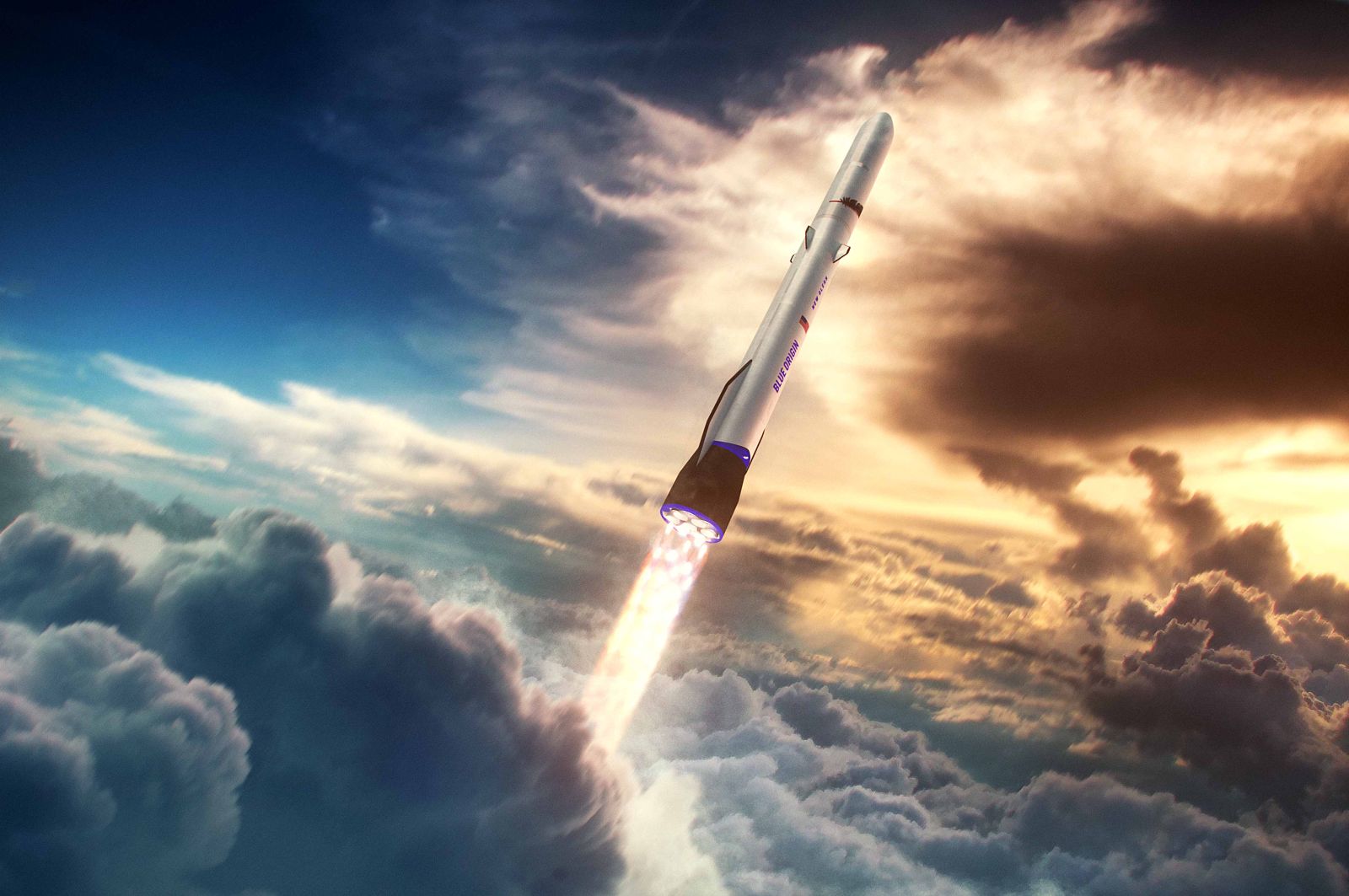
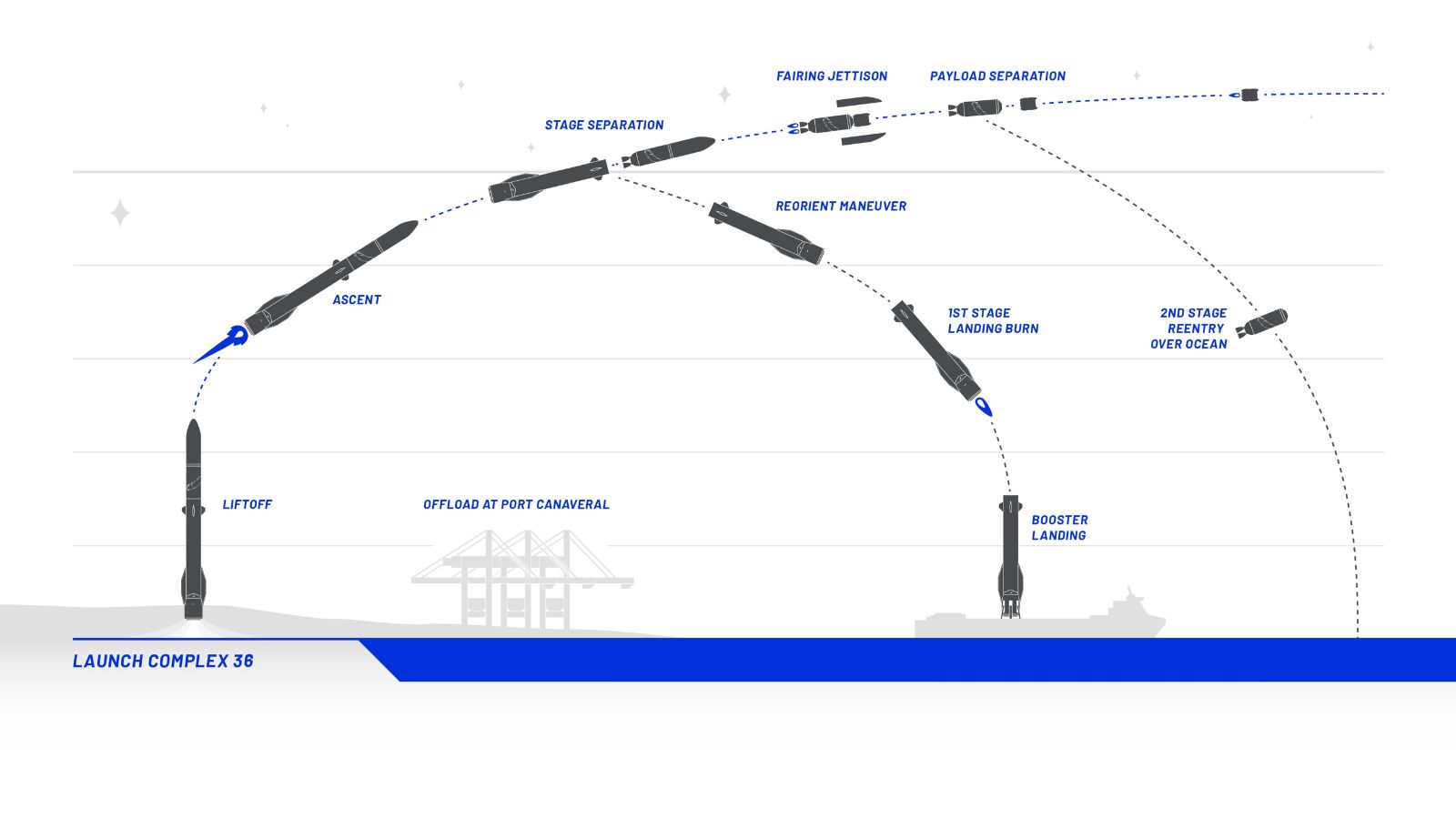

| Neon CRM by Neon One |

